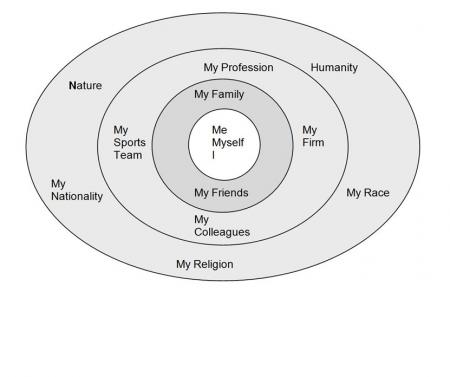Continuing their series on challenging coaching Ian Day and John Blakey, co-authors of 'Challenging Coaching: Going beyond traditional coaching to face the FACTS', take a look at the 'S' of FACTS which stands for systems thinking.
First popularised by Peter Senge through his book 'The Learning Organisation', systems thinking has taken hold in academic circles but is still not often used as a practical tool in corporate life or in executive coaching. At its core, systems thinking is a belief that everything is inter-connected and that it is the relationship between things rather than the things themselves that is the primary driver of change. The human body is a system. A family is a system. A business is a system. All systems share some common characteristics, so here are some rules of behaviour that can help us in our work as executive coaches:-
Sub-optimisation
One of the first implications of systems thinking is the awareness that systems are often embedded in other systems. Hence the definition of the boundary of a system depends upon the perspective we are adopting at any point in time. This 'nesting' of systems is shown in the figure below.

When a coach is working with one individual it can be tempting to think that the individual is an 'island' and that their actions are independent of what is happening in the rest of the organisation. This way of thinking can lead to a focus upon maximising the individual's performance irrespective of their wider impact. In systems thinking terms, the risk that the goals at a sub-system level dominate at the expense of the total system's goals is known as sub-optimisation.
Fractals
The term fractal is used to describe how the examination of a small-scale component of a system can reveal information relating to the system as whole. A popular example of a fractal is the coastline of a country which has look-alike features and characteristics whether viewed close up or at a distance.
Applied to executive coaching, the coachee can be regarded as a fractal of the whole organisation. In working with the individual at a personal level much will also be revealed about the nature of the organisational system as a whole. In my experience, a vivid example of this occurred when working with two different management levels of a Scandinavian telecommunications company. At the more senior level, the coachee had talked about the risk of the organisation 'hitting the wall' due to the extent of its ambition and the pace at which this was being pursued. At the lower level, the coachee himself had 'hit the wall' physically. Both repeatedly used the same phrase yet applying it to different levels of the system – it was a revealing example of how underlying and reptitive patterns can pervade an organisational culture.
Leverage points
Thirdly, the phrase 'leverage points' is used in systems thinking to describe those points in the system where a small change could lead to a large shift in behaviour. An example of a leverage point can be seen in the practice of martial arts. How is it that a wiry, seven stone tail chi master can throw a six foot three hulk across the room with seemingly no great effort at all? The tail chi master has spent a lifetime studying the leverage points of the human body. They instinctively sense when the opponent is fractionally off balance and then they use this opportunity to intervene decisively.
In coaching leverage points in the system may be specific individuals who have become talismanic within the organisation. They could also be specific moments in time when the system is poised on a decision point which will have far reaching and irreversible consequences. If a coach is sensitive to such leverage points and bold to intervene decisively when the moment arises then a 'ripple effect' can be created.
The above examples give a brief insight into the fascinatng world of sytems thinking. Taken as whole, this mindset challenges the person-centred thinking that has pervaded much of early executive coaching literature. As we embrace a systems thinking mindset we shift from a focus on 'me,me,me' to focus on 'we,we,we'. In a coaching context this can help guard us against the following risks:-
- Collusion with the vested interests of powerful individual coachees
- Pandering to personal wants rather than fulfilling organisational needs
- Fuelling the self-obsessive 'celebrity culture' that has crept into senior level organisational life
John and Ian's book 'Challenging Coaching- Going beyond traditional coaching to face the FACTS' published by Nicholas Brealey Publishing is available on Amazon. More resources can be accessed via www.challengingcoaching.co.uk. This is the ninth in a series of monthly columns on TrainingZone to explore the detail of challenging coaching









